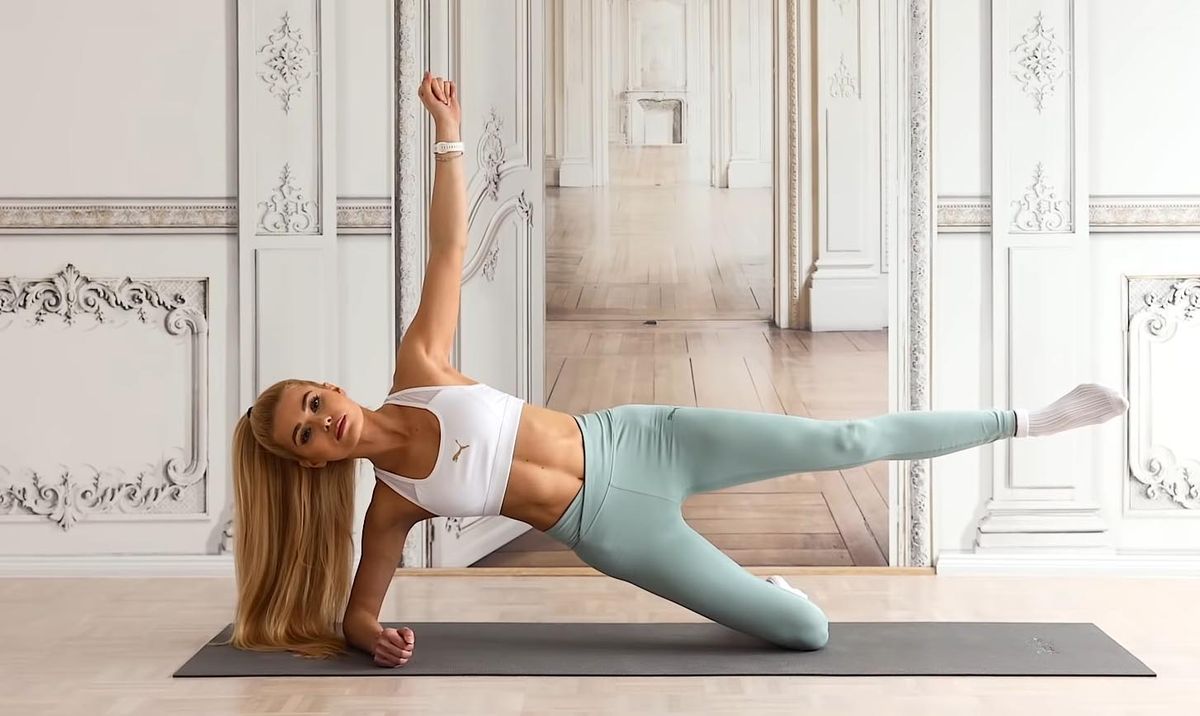Another week, another plank challenge — we just can’t seem to get enough of them at Tom’s Guide.
As my colleague recently said when trying planks with knee taps every day for a week — the exercise can get a little bit boring, especially when you’re hitting them up with dedicated practice every day.
Over the years at Tom’s Guide, we’ve participated in many fitness challenges, including adding the best plank variations into our routines, and another one I had yet to try was the side plank with leg raises.
It’s also known as a star plank and involves holding a side plank (forearms or straight arms are allowed) while extending one arm and one leg into the air. If you’re feeling brave (I was), you can add leg raises by lifting and lowering the leg for reps. Here’s what happened after one week of them.
How to do the side plank with leg raises
Before trying the advanced plank exercise, make sure you’ve learned how to do a side plank properly:
- Lie on one side with your legs stacked
- Rest your forearm on the mat aligning your shoulder over your forearm (if you prefer, extend your arm and press down through your palm)
- Engage your abs and lift your hips and knees away from the floor, maintaining a straight line from head to toes
- Keep your chest forward-facing and hips driving upward
- Extend your top arm and leg into the air
- Hold the position, or begin lifting and lowering your leg while squeezing your glutes
- Remember to switch sides.
You can make this exercise static or dynamic, but to work my glutes harder, I chose to add the leg raises. It’s up to you how you program them, but I recommend 3-4 sets of 8-12 reps per side if you’re adding movement, or, hold for 15-30 seconds on each side if you’re opting for a star plank, and build as you get stronger.
But what did I learn from doing this exercise every day?
It helps me target my outer glutes
Known primarily as a core exercise, side planks engage your core muscles, including the obliques that run down the sides of your torso, while heavily recruiting your shoulders, arms and outer thighs.
Adding the leg and arm lift challenges your balance, stability and coordination, but also helps engage the hips, outer glutes and adductors (muscles that run down the inner thighs).
For most people, performing the exercise from a forearm position feels more accessible, but either way, I found the exercise got my inner thighs, hips and glutes trembling while also torching my shoulders.
If you haven’t already got one, your elbows will thank you for using one of the best yoga mats for joint support. And if the mat isn’t helping, bring one knee to the floor for extra support and comfort; this is also a good idea if you’re just starting out with side planks.
It’s one of my favorite plank variations
Any plank that can engage the lower body — plank tucks and plank jacks are just two examples — gets a nod from me. I love efficiency when I’m exercising, and what’s more efficient than a full-body workout?
This plank is a compound exercise, which means it targets more than one joint and muscle. After a week’s worth of side planks with leg raises, I could feel this everywhere, not just in my abs and glutes.
I have to think about my back more
I’m pretty well versed in planks and their many variations — I’ve been teaching and doing them for a long time — but the side plank always makes me think more about my back, and I have to make a conscious effort to place focus on what my body does while holding a side plank position.
I’m hypermobile and have always struggled with my shoulders, so I like to use a cue list I can run through whenever I’m weight-bearing on my shoulders for any length of time.
For side plank leg raises, I start from the shoulders up; stacked shoulders and legs, forward-facing chest, hips driving upward and a full range of motion as I lift and lower my leg. Avoid twisting your spine, turning your hips toward the ceiling, or dropping them to face the floor.
My verdict on the side plank with leg raises
Put enough hours in and they say you can become an expert (10,000 to be exact), I have no desire to put 10,000 hours into these, but a week’s worth of practice at least helped me tighten up my form, improve awareness of my muscle engagement and work my whole body hard.
Of course, I wouldn’t program these every day in my regular routine, and I wouldn’t recommend the same to anyone else. But I encourage you to practice exercises if you want to improve them while keeping enough diversity in your routine to help you stay safe and stimulated.








:max_bytes(150000):strip_icc()/roundup-writereditor-loved-deals-tout-f5de51f85de145b2b1eb99cdb7b6cb84.jpg)


